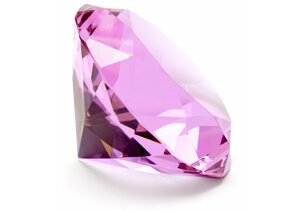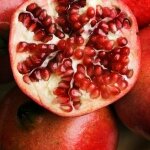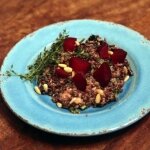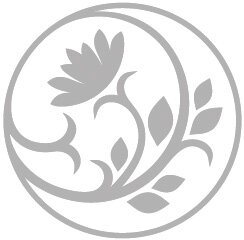
Cranberries are a classic holiday addition. From April-November these hardy, cold weather berries grace the landscape of Cape Cod, MA. The cold temperatures, acid peat soil, abundant fresh water and sand allow these berries to flourish where most other plants would not. Cranberries can be dry harvested, or they can be wet harvested in flooded bogs. Historically wild cranberries were picked and eaten buy mariners and whalers for their vitamin C content in order to prevent scurvy on long voyages. These little jewel-colored berries are also considered a super fruit due to their nutrient profile. Here are some of their amazing physical and mental health benefits:
Antioxidant Protection
Cranberries contain an amazing array of antioxidants that are found exclusively in whole cranberries (verses a cranberry extract). Cranberry's special combination of phenolic, proanthocyanidin, anthocyanin, flavonoid, and triterpenoid antioxidants are without a doubt unique. These antioxidants slow the aging process and reduce inflammation. They also protect against cancer development. The phytonutrients in cranberry provide maximal antioxidant benefits only when they’re consumed in combination with each other, and with other nutrients present in cranberry like manganese and vitamin C.
Protection against Urinary Tract Infection (UTI)
Even before the research was done, cranberries have been used to help prevent and treat urinary tract infections (UTIs). Although we once thought this was due to cranberries’ acidity, we now know it is due to their proanthocyanidin (PAC) content. The PACs in cranberry have a special structure (called A-type linkages) that makes it more difficult for certain types of bacteria to latch on to our urinary tract linings. By making it more difficult for unwanted bacteria like E. coli to cling onto the urinary tract linings, cranberries’ PACs help prevent the expansion of bacterial populations that can result in outright infection.
Anti-Inflammatory Benefits
A 2013 Denmark study linked depression and other mood disorders to the brain’s response to chronic inflammation. In addition to the potential mental health benefits, cranberries have been shown to provide vital anti-inflammatory benefits for the cardiovascular system and for many parts of the digestive tract (including the mouth and gums, stomach, and colon). The phytonutrients in cranberry have been found to work together, each playing a role, in lowering our risk of unwanted inflammation. It’s tempting to buy a cranberry extract of several phytonutrients, but this has been found to be much less effective. Supplements not only miss some of the many, many nutrients that are found naturally in the berry, but they also miss the perfect, naturally found ratios of these nutrients, and can lose their potency through manufacturing. These phytonutrient categories include proanthocyanidins (PACs), anthocyanins (the flavonoid pigments that give cranberries their amazing shades of red), flavonols like quercetin, and phenolic acid (like hydroxycinnamic acids).
Cardiovascular Benefits
Increased cardiovascular system health is perhaps the best-researched area of cranberry health benefits, after reduced risk of UTIs. Oxidative stress and chronic inflammation can place our blood vessel walls at great risk of damage. Once damaged, our blood vessels walls can undergo a process of plaque formation, and our risk of atherosclerosis (blood vessel wall thickening and blood vessel blocking) can be greatly increased. Consuming a normal everyday amount of cranberries or cranberry juice has been shown to prevent the triggering of two enzymes that are pivotal in the atherosclerosis process (iNOS, and COX-2), as well as blocking activity of a pro-inflammatory tumor necrosis factor alpha (TNF-alpha). By reducing inflammation in these ways, cranberries can be valuable in protecting against cardiovascular health risks.
Orange Cranberry Sauce
Makes: 4 1/2 cups
Serving Size: 1/4 cup
Active Time: 15 minutes
Total Time: 40 minutes
INGREDIENTS:
- 4 medium navel oranges, divided
- Water, as needed
- 2 12-ounce bags fresh cranberries (6 cups)
- 1 1/4 cups packed light brown sugar
- 1/4 teaspoon ground cloves
- Pinch of salt
PREPARATION:
- Use a sharp knife to slice the ends off 3 oranges and remove the peels and white pith; discard. Working over a bowl, cut the orange segments from their surrounding membranes. Squeeze the juice into the bowl before discarding the membranes. Leaving the segments in the bowl, pour the juice from the oranges into a measuring cup. Juice the remaining orange and add the juice to the measuring cup. If necessary, add water to make 2/3 cup liquid total.
- Combine the juice, cranberries, brown sugar, cloves and salt in a large nonreactive saucepan (see tip below). Bring to a boil over medium-high heat. Reduce heat to medium-low and cook, stirring occasionally, until thickened, about 15 minutes.
- Let cool for 10 minutes. Stir in the reserved orange segments. Serve warm, room temperature or cold.
TIPS & NOTES
Make Ahead Tip: Cover and refrigerate for up to 1 week.
Tip: Be sure to use a nonreactive pan baking dish or bowl—stainless-steel, enamel-coated or glass—when cooking with acidic food (citrus, cranberries, tomatoes) to prevent the food from reacting with the pan. Reactive pans, such as aluminum and cast-iron, can impart off colors and/or flavors.
NUTRITION
Per cup: 89 calories; 0 g fat (0 g sat, 0 g mono); 0 mg cholesterol; 23 g carbohydrates; 15 g added sugars; 0 g protein; 2 g fiber; 13 mg sodium; 101 mg potassium.
Nutrition Bonus: Vitamin C (38% daily value)
























































